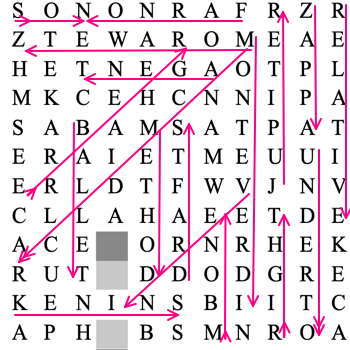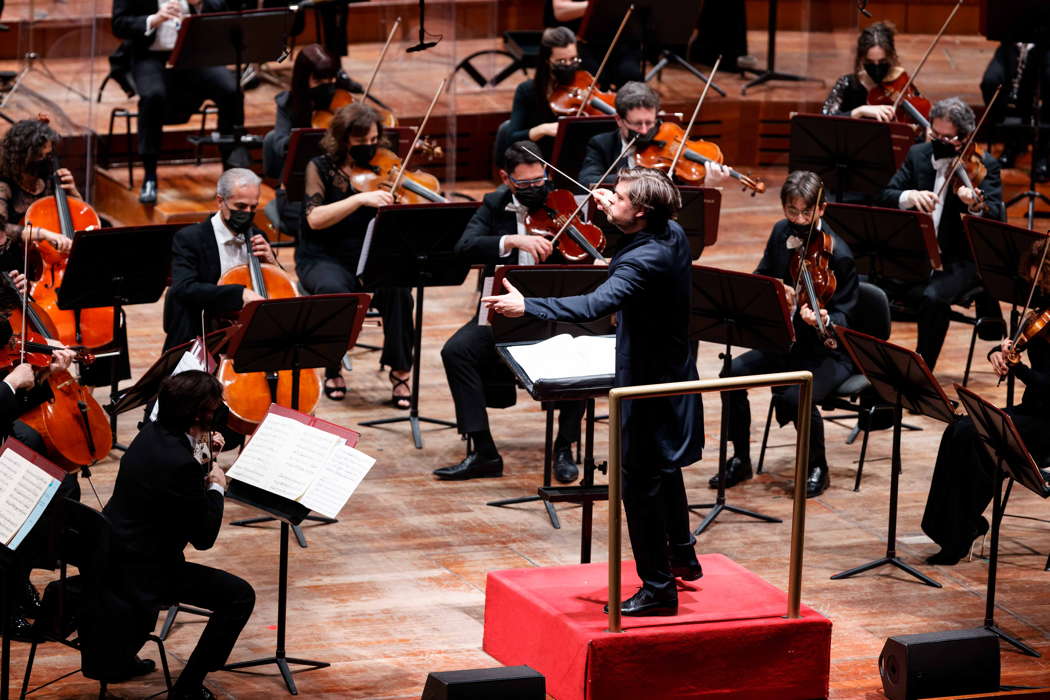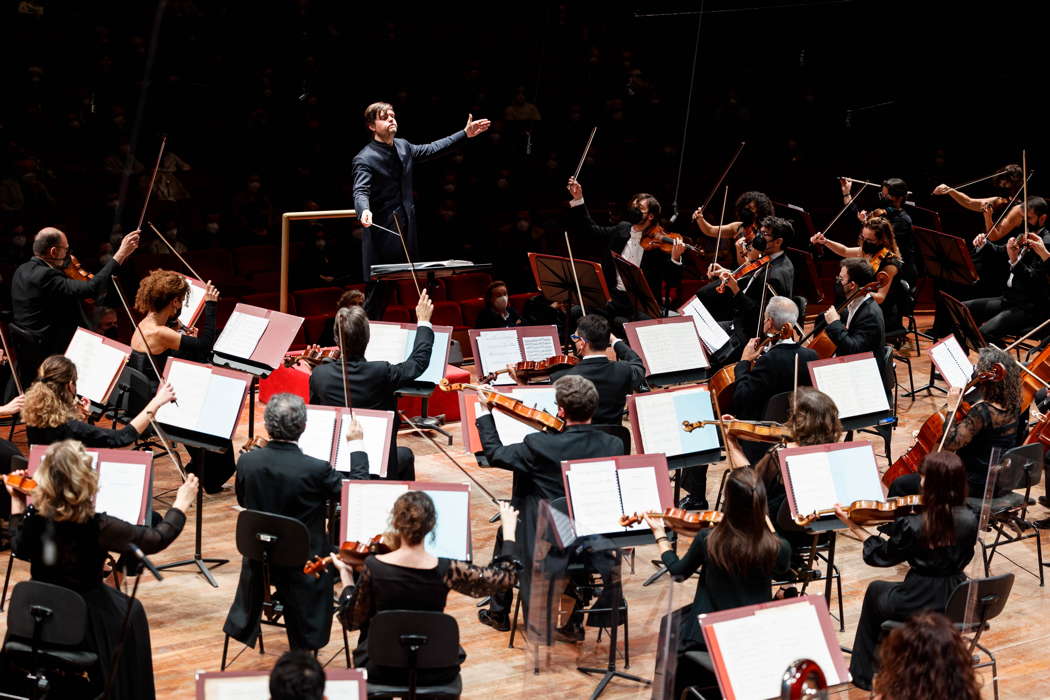 SPONSORED: Letter to Louise Talma (Never Sent) - by Jenna Orkin.
SPONSORED: Letter to Louise Talma (Never Sent) - by Jenna Orkin.
All sponsored features >>
 WORD SEARCH: Can you solve Allan Rae's classical music word search puzzles? We're currently publishing one per month.
WORD SEARCH: Can you solve Allan Rae's classical music word search puzzles? We're currently publishing one per month.
 DISCUSSION: John Dante Prevedini leads a discussion about Composers, individuals or collective?, including contributions from David Arditti, Halida Dinova, Robert McCarney and Jane Stanley.
DISCUSSION: John Dante Prevedini leads a discussion about Composers, individuals or collective?, including contributions from David Arditti, Halida Dinova, Robert McCarney and Jane Stanley.
Musical Fairy Tales
GIUSEPPE PENNISI listens to ballet music in Rome
The National Santa Cecilia Academy had prepared a truly innovative program for its symphonic concert season to close 2021 and open 2022. The devil (ie COVID–19) put its tail on it, so it was possible to perform only half. It was not the usual menu of Christmas music or Viennese and Hungarian waltzes, but a careful choice of music for fairy tales, largely Russian.
The first concert, the one cancelled before Christmas due to the pandemic, was a novelty for Rome, and perhaps for Italy; Tchaikovsky's incidental music for The Snow Maiden by the theatre writer Ostrovsky. I remember that as a child I was enchanted by the production of the Teatro dell'Opera di Roma of the opera that Rimsky-Korsakov drew from the same comedy. Thus, I was preparing to enjoy listening to the same fairy tale as seen by Tchaikovsky, but the pandemic forced the concert to be cancelled, or rather rescheduled into the future.
The second concert, which I attended on 9 January 2022, was a program of fairy tales in music composed mainly for ballets. The first is The Fairy's Kiss, inspired by Hans Christian Andersen's Virgin of the Ice. Stravinsky composed it in 1928; it was staged at the Paris Opera in November of the same year for Ida Rubinstein's dance company. The second is the suite of a ballet classic, Prokofiev's Cinderella, which required a long gestation before its debut at the Bolshoi Theatre in 1945. On the podium was Juraj Valčuha, current Music Director of the Teatro di San Carlo in Naples.

Juraj Valčuha conducting the Orchestra dell'Accademia Nazionale di Santa Cecilia at the Parco della Musica auditorium in Rome in January 2022. Photo © 2022 Musacchio, Ianniello & Pasqualini
Opening the evening and serving as an appetizer to the rest of the concert was Ravel's seven minute Menuet Antique, written for piano in 1895 when Ravel was twenty years old, and orchestrated in 1929. It can be considered Ravel's first masterpiece. Its form is rather simple and tripartite. The first part, indicated with Majesteusement, is the actual minuet followed by a trio (Doux); it ends with the classic resumption. Following Chabrier, Ravel devotes considerable value to the rhythm that in the first part is well marked; the high notes prevail, giving a great lightness and a silvery sonority, supported by frequent use of staccato. The trio, more rhythmically calm, has an archaic tone due essentially to its careful modal intonation. The 1929 version for orchestra is for a less numerous formation than the one presented in the large Santa Cecilia concert hall (planned for an audience of nearly 3000). I think this was its first performance at the Santa Cecilia Academy concerts, and perhaps also the first in Rome. The interesting aspect is the light Slavic patina given by Juraj Valčuha to this purely French style work.
The Fairy's Kiss marks an important step in Stravinsky's evolution: the transition from the Russian-Slavic style to the neo-classical and French mode. In 1927, Stravinsky was still finishing the music for the ballet Apollon Musagète when Ida Rubinstein asked him to make a ballet for her company's performances. The composer loved Tchaikovsky very much and when Alexandre Benois, who worked with the dancer, proposed the possibility of creating a ballet inspired by his music, Stravinsky immediately accepted, especially since he was free to choose the subject and plot of the work. The choice fell on The Virgin of the Ice by Hans Christian Andersen. The plot is charming. A woman, clutching her child, advances with difficulty under the snow. The Ice Fairy arrives; she puts a talisman around the neck of the child and kisses him on the forehead. Then she moves away while the men of a nearby village come to the rescue of the woman and of her child, Twenty years later, the child has become a handsome young man about to marry the miller's daughter. During a party, on the eve of the wedding, a mysterious gypsy reads the hand of the young man. On the wedding day, during the preparations, as soon as the girlfriend leaves, a veiled woman appears to the young man. He lifts the veil and recognizes the gypsy of the day before, now adorned with ice jewels and royal charm: it is the Ice Fairy. She comes to take back the young man marked by that kiss that had consecrated him to her. He follows her into her glacial world, leaving his girlfriend waiting for him in vain.
Stravinsky did what, to some extent, he had already done with the music by Giovanni Battista Pergolesi in Pulcinella. Tchaikovsky's love for opera, however, did not lead him to use the music as he had done with the other ballet, but to treat it with affection and tenderness. Stravinsky chose only vocal or piano parts by Tchaikovsky and not orchestral works. However, more than half of the pieces that make up the ballet are originals by Stravinsky, the others revisited, developed or interspersed with original pieces. The 1928 version was performed, not – as is often the case – the later one of 1934 for a smaller orchestral ensemble. The most interesting aspect of the performance, in my opinion, is how the tribute to Tchaikovsky, the most 'Western' of the late nineteenth and early twentieth century Russian composers, is kept understood (but very present) while the emphasis is placed on the rhythm - specifically Stravinsky's.

Juraj Valčuha conducting the Orchestra dell'Accademia Nazionale di Santa Cecilia at the Parco della Musica auditorium in Rome in January 2022. Photo © 2022 Musacchio, Ianniello & Pasqualini
The second part of the concert was Suite No 1 from Cinderella by Prokofiev, who composed three such suites for this ballet which he loved very much. The work's long gestation was due not so much to the composer's moving from place to place - as indicated in the program notes – but by major changes in plans. Prokofiev started composing the ballet in 1941 before the German invasion. The work had to be interrupted not only because Prokofiev, like almost all other artists, had to move to Alma Ata (in Central Asia). There, he was engaged in composing a 'patriotic' opera of high level: War and Peace, music for three important films by Sergei Eisenstein - Alexander Nevsky and the first and second parts of Ivan The Terrible, plus music for 'patriotic' films now rightly forgotten - Partisans in the Steppes of Ukraine, Kotovsky and Tonya. In these conditions, it was difficult to devote oneself to a ballet that, in the original intentions of the composer, was a hymn to love. Cinderella blossomed completely, however, after the end of the war and the victory. Indeed, the hymn to love became stronger combined with the redemption of the protagonist. Juraj Valčuha did well to insert sections from the other two suites which emphasize the triumph of love even more.
The audience was scarce, due to the pandemic, but the concert was a great and deserved success.
Copyright © 11 January 2022
Giuseppe Pennisi,
Rome, Italy

ARTICLES ABOUT THE ACCADEMIA NAZIONALE DI SANTA CECILIA
CLASSICAL MUSIC ARTICLES ABOUT RUSSIA


